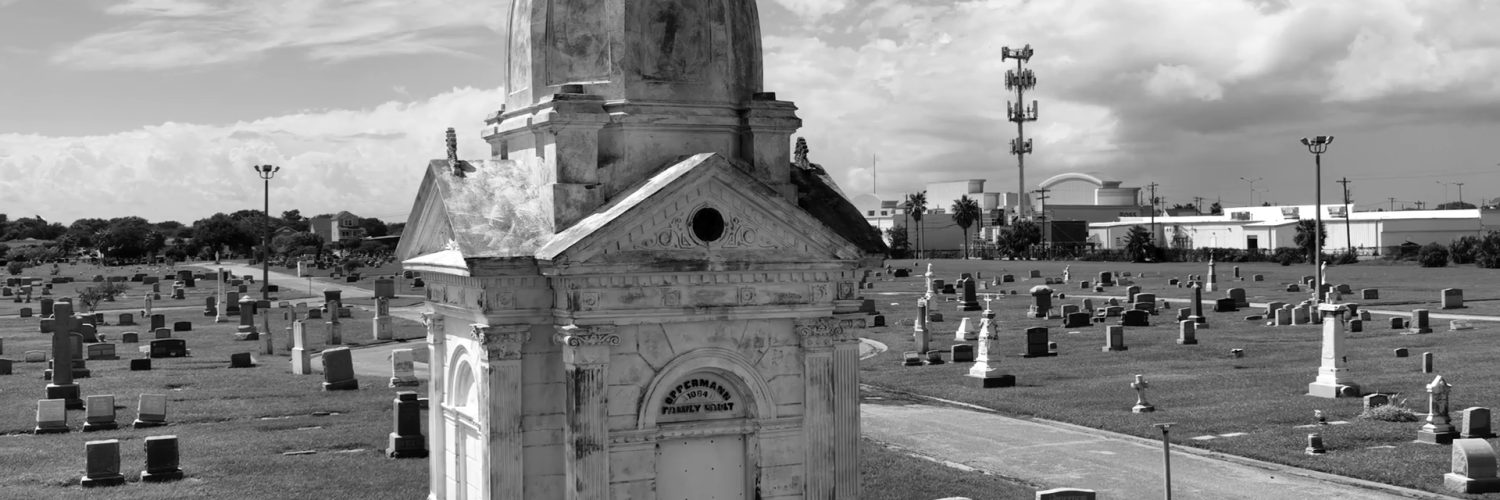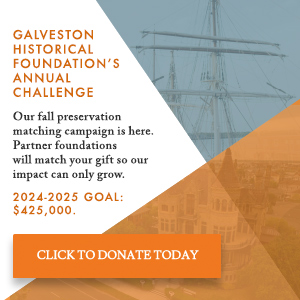A STORY OF FAMILY, ARCHITECTURE, AND GALVESTON
BY HALEY LYNCH AND ELISABETH CARROLL PARKS, #GALVESTONHISTORY CONTRIBUTORS
The Oppermann Mausoleum cuts an imposing figure. The domed stone vault towers above the modest headstones that surround it in Calvary Cemetery on 65th Street, and silently conveys an unmistakable message: Important stories live within these walls.I really thought, boy, this is the perfect organization to have the vault because they’re really focused on the history of the island, the buildings, and the architecture. It’ll be in good stewardship with them. – Arthur Oppermann.
The Oppermann family story is also an inextricably Galveston story. The Oppermanns immigrated to Texas from Germany in 1846. A son, Gustav, who would build the family’s enduring legacy on Galveston Island, originally stayed behind in Europe. “We aren’t sure if he stayed to finish school or for some other reason, but then he applied for citizenship and came to the United States in 1848,” says Arthur Oppermann, the great-grandson of Gustav. “He became a citizen in 1853.”

Gustav thrived in his new home. He married Mary Anna Knodell, who was born in 1838 in Sabine Pass, Texas. Mary Anna’s family arrived in Texas when the territory still belonged to Mexico, because her father, Christian Knodell, received a sizable land grant southeast of Beaumont. Mary Anna finished school in her hometown, then married Gustav in St. Mary’s Cathedral on Galveston Island in 1857.
EXCLUSIVE MEMBER-ONLY CONTENT
 GalvestonHistory+ members have access to exclusive video content associated with this online feature. Log into your member account here, or join today for access to our monthly content, member-only ticketing, and more.
GalvestonHistory+ members have access to exclusive video content associated with this online feature. Log into your member account here, or join today for access to our monthly content, member-only ticketing, and more.
A savvy real estate investor, Gustav owned blocks of buildings in downtown, including a prominent grocery store he started with his father, Theodore, on the Strand. Gustav also became a supplier of construction materials for the booming island, specializing in rock lime. In 1884, the Oppermanns were undeniably wealthy, with real estate holdings of $73,220––the equivalent of about $2.5 million today. The success ensured the Oppermanns financial standing akin to many of Galveston’s most well-known early citizens, such as William L. Moody Sr., James Moreau Brown, and George Ball.
Gustav and Mary Anna raised 10 children together. Then, in 1884, Mary Anna passed away suddenly from a brief illness. She was in her mid-40s. The family was devastated.
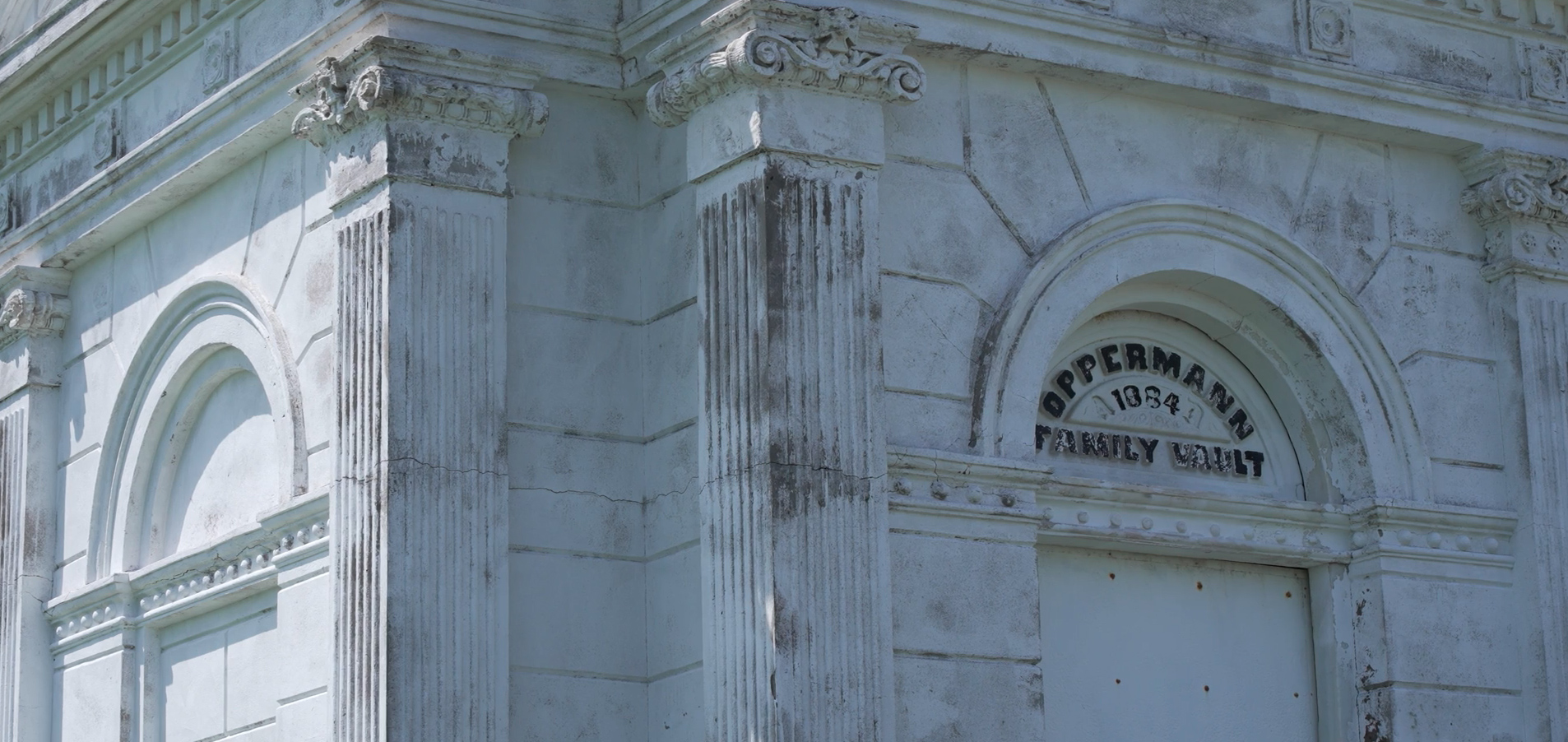 Gustav commissioned the construction of the mausoleum in Calvary Cemetery for Mary Anna. A man of means in search of a worthy tribute to his wife, Gustav called upon prolific Victorian architect Nicholas J. Clayton for the mausoleum’s design. The mind behind Galveston Island landmarks including The Bishop’s Palace, Grace Episcopal Church, and the Ashbel Smith Building, as well as notable structures throughout Texas, Louisiana, and Florida, Clayton applied his distinct vision to the vault. Finished in 1885, the Oppermann Mausoleum adheres to the elaborate Italian Renaissance classical style so beloved by Clayton.
Gustav commissioned the construction of the mausoleum in Calvary Cemetery for Mary Anna. A man of means in search of a worthy tribute to his wife, Gustav called upon prolific Victorian architect Nicholas J. Clayton for the mausoleum’s design. The mind behind Galveston Island landmarks including The Bishop’s Palace, Grace Episcopal Church, and the Ashbel Smith Building, as well as notable structures throughout Texas, Louisiana, and Florida, Clayton applied his distinct vision to the vault. Finished in 1885, the Oppermann Mausoleum adheres to the elaborate Italian Renaissance classical style so beloved by Clayton.
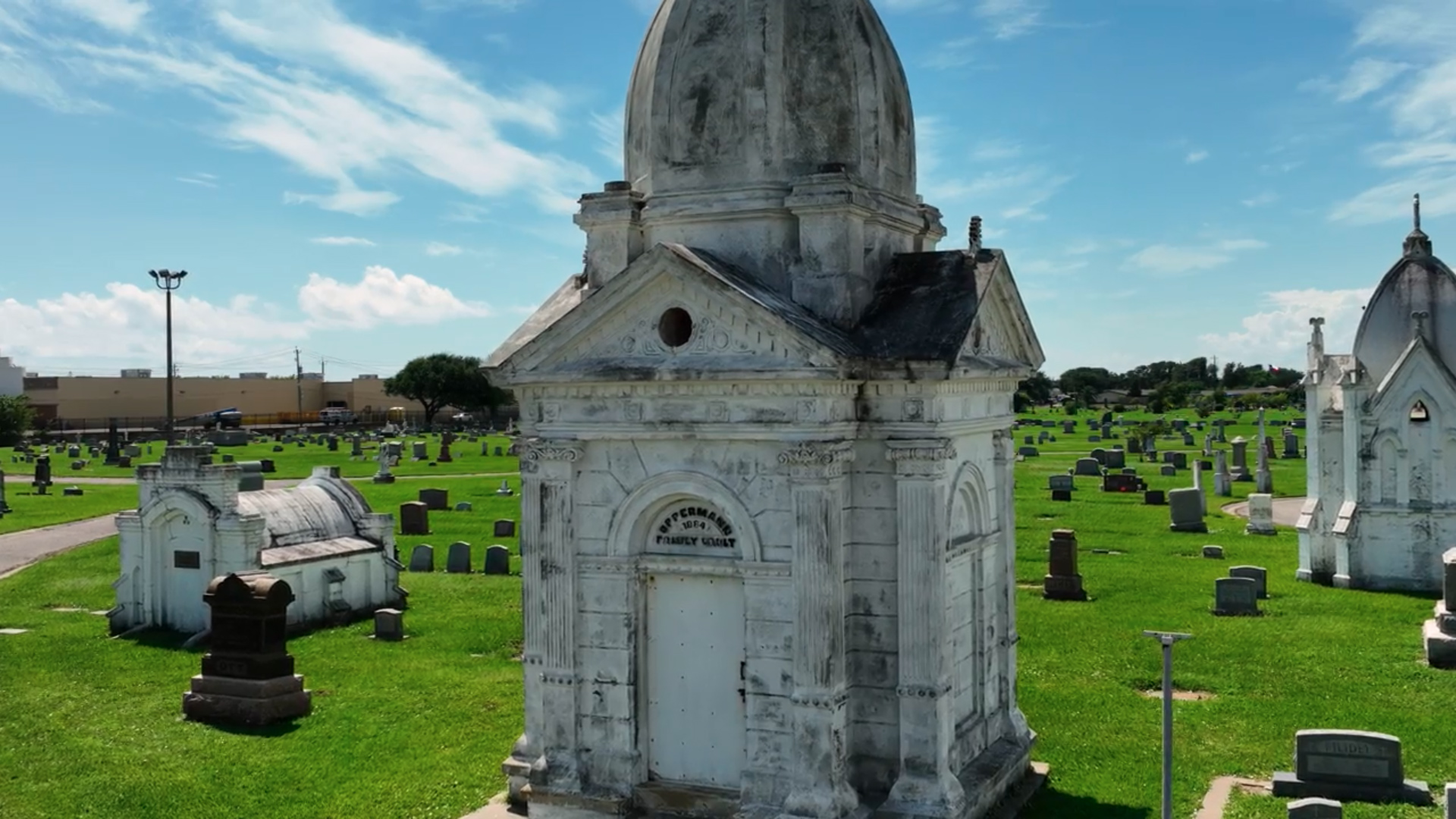 A devoted Catholic, Clayton was also buried in Calvary Cemetery in 1916, not far from his work.
A devoted Catholic, Clayton was also buried in Calvary Cemetery in 1916, not far from his work.
After the family moved Mary Anna to the mausoleum, the Oppermann family story continued, as stories must––in the Oppermann’s case, with tragic twists that added to the number of vault residents.
Gustav married again, a year after burying Mary Anna. His new wife was about 30 years younger than Gustav. Rumors swirled that Gustav and Mary Anna’s eldest son, Joseph, was in love with Gustav’s new wife. While Gustav and his young bride honeymooned, Joseph ended his own life by consuming rat poison.
According to the family, Joseph was already buried when Gustav returned home. Then, Gustav died the very next year. His children placed him in the mausoleum with their mother, as he’d wished.
 But there was more work to do. Joseph’s siblings hadn’t forgotten him. They exhumed his body and placed it to rest inside the family’s mausoleum.
But there was more work to do. Joseph’s siblings hadn’t forgotten him. They exhumed his body and placed it to rest inside the family’s mausoleum.
Gustav’s young wife inherited the family’s estate and ultimately forced out any of Mary Anna and Gustav’s children that still lived in the house. Thus, the Oppermann Mausoleum took on even deeper significance.
Laura, Gustav and Mary Anna’s daughter, died in 1890, just one year after giving birth to her own daughter, Cathy. Laura was laid to rest in the family vault. Only two years later, three-year-old Cathy died. Her father placed her in the vault next to her mother. Robert, another son of Gustav and Mary Anna, died in 1895. His family placed him in the mausoleum, making him the sixth Oppermann laid to rest there.
The historic 1900 Storm ravaged Galveston on September 8. Albert, the eighth child of Gustav and Mary Anna, had recently married Abigail. The hurricane swept the two newlyweds away. In Calvary Cemetery, wind and water ripped the marble door off of the Oppermann Mausoleum. The Gulf rushed into the vault, then receded, taking the remains of Mary Anna, Joseph, little Cathy, and Robert.
 After The Storm, the remaining Oppermann siblings placed a classified ad, desperately searching for any trace of their brother Albert, as well as the surge-swept caskets. Nothing was ever found. Grief-stricken, the siblings placed a memorial slab inside the vault, honoring Albert.
After The Storm, the remaining Oppermann siblings placed a classified ad, desperately searching for any trace of their brother Albert, as well as the surge-swept caskets. Nothing was ever found. Grief-stricken, the siblings placed a memorial slab inside the vault, honoring Albert.
The heartbreak of losing her mother, brother and father within a period of three years overwhelmed Emily Oppermann, who suffered from depression. She had been institutionalized after her father Gustav died in 1887. When Emily passed away in a state hospital in Wichita Falls in 1929, the family brought her home to rest in the vault in Galveston. The final Oppermann placed in the vault was Arthur, Gustav and Mary Anna’s ninth child. Arthur worked for the Santa Fe Railroad most of his life.
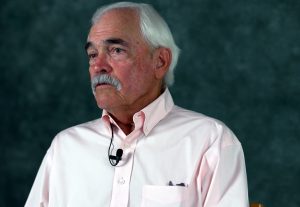
In 2019, the Oppermann family gifted the Oppermann Mausoleum to the Galveston Historical Foundation. “I really thought, boy, this is the perfect organization to have the vault because they’re really focused on the history of the island, the buildings, and the architecture,” says Arthur Oppermann. “It’ll be in good stewardship with them.”
Thus far, part of that GHF stewardship has included safeguarding the Oppermann’s and island’s history: In 2024, the GHF team led efforts to ensure the 1885 Oppermann Mausoleum earned certification as a Recorded Texas Historic Landmark from the Texas Historical Commission.
Of course, stories like the Oppermann’s are best explored in person. GHF offers expert-led tours of Calvary Cemetery, where history, architecture, and the quintessential mysteries of human experience come together.


